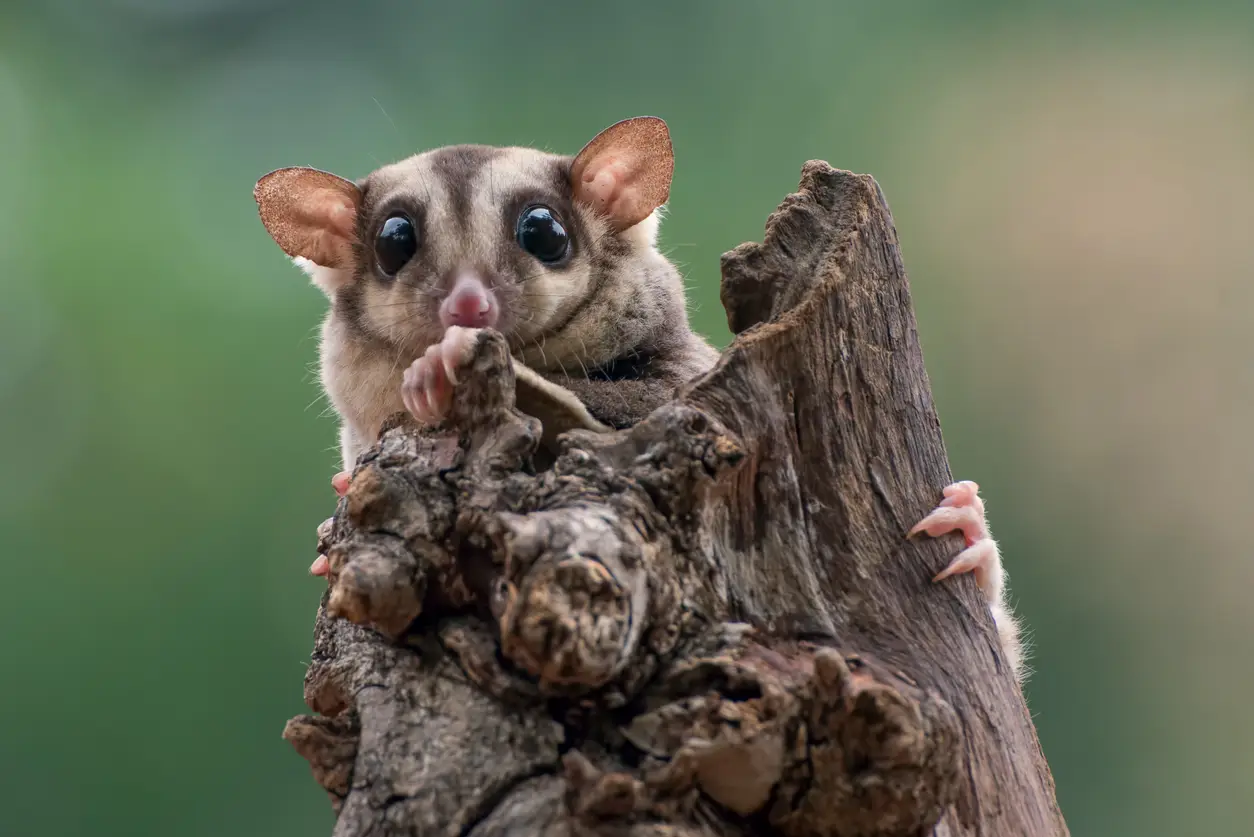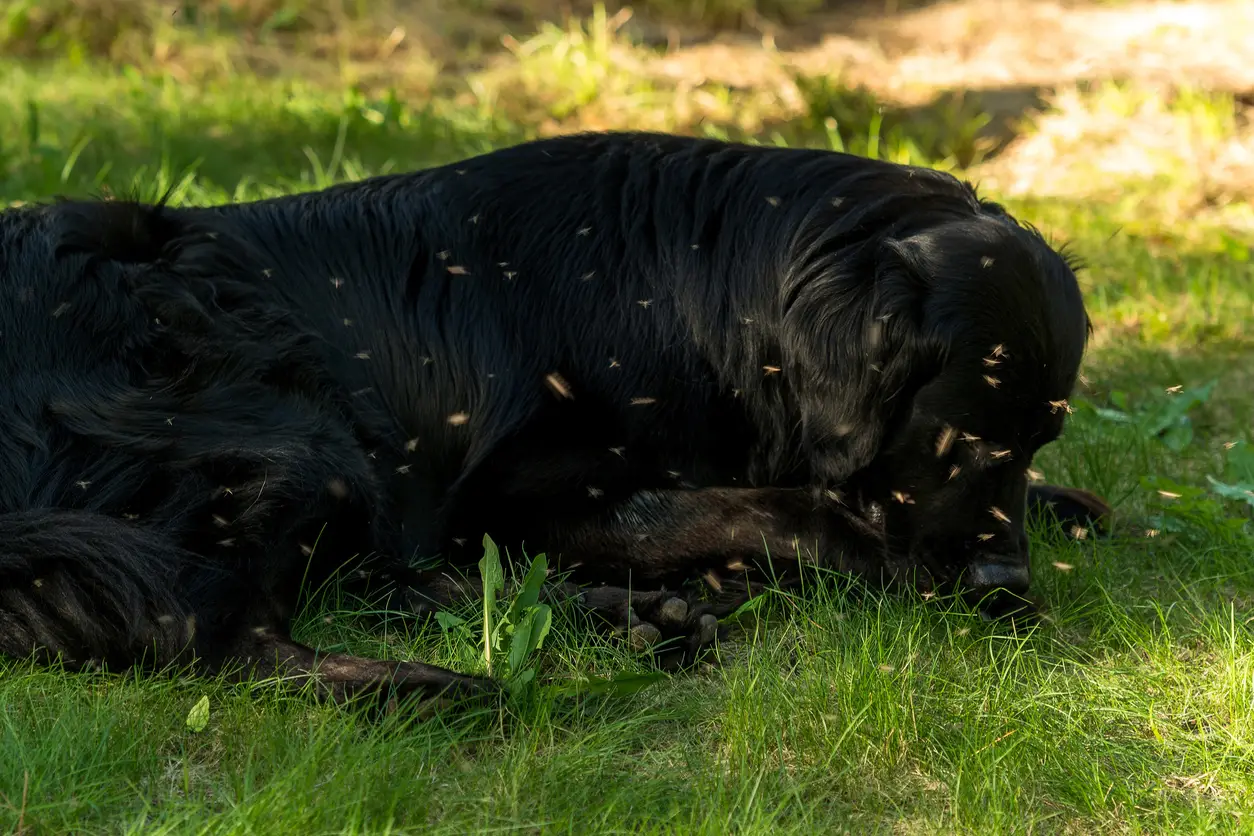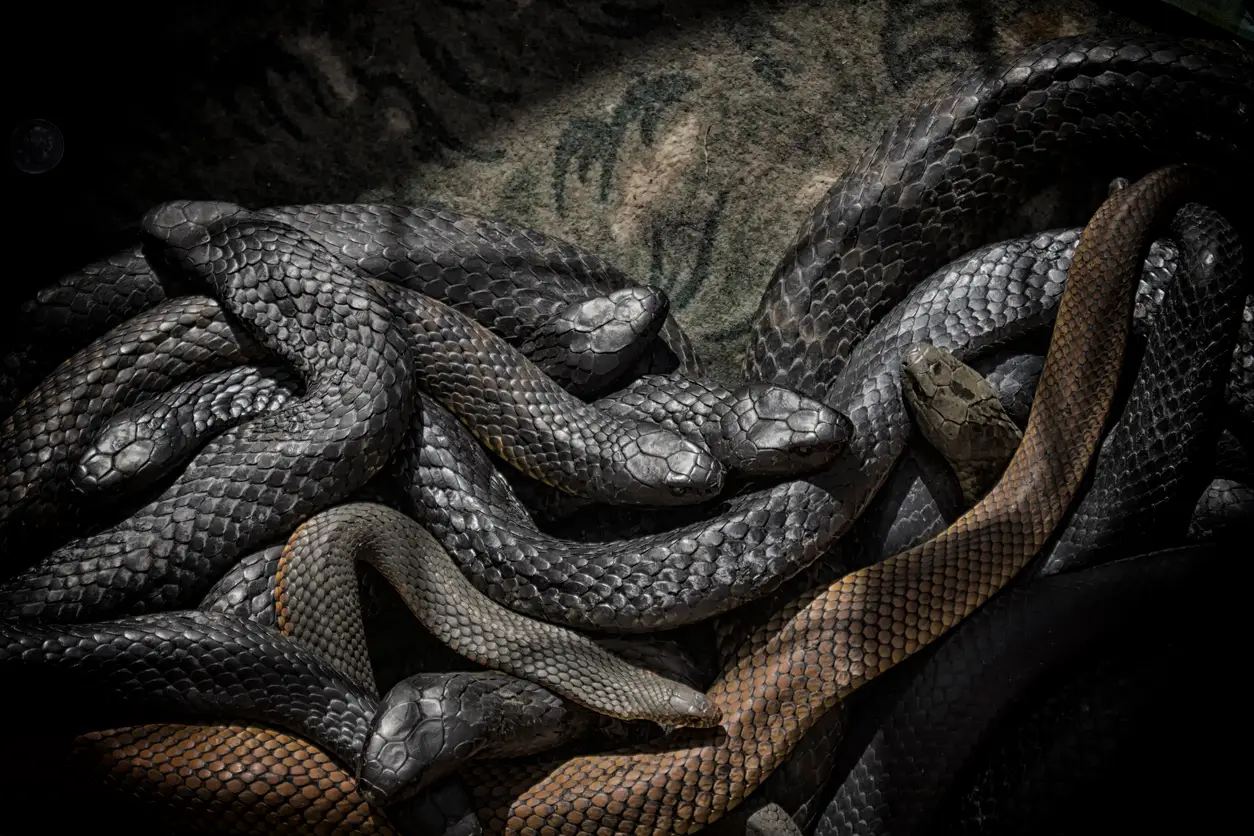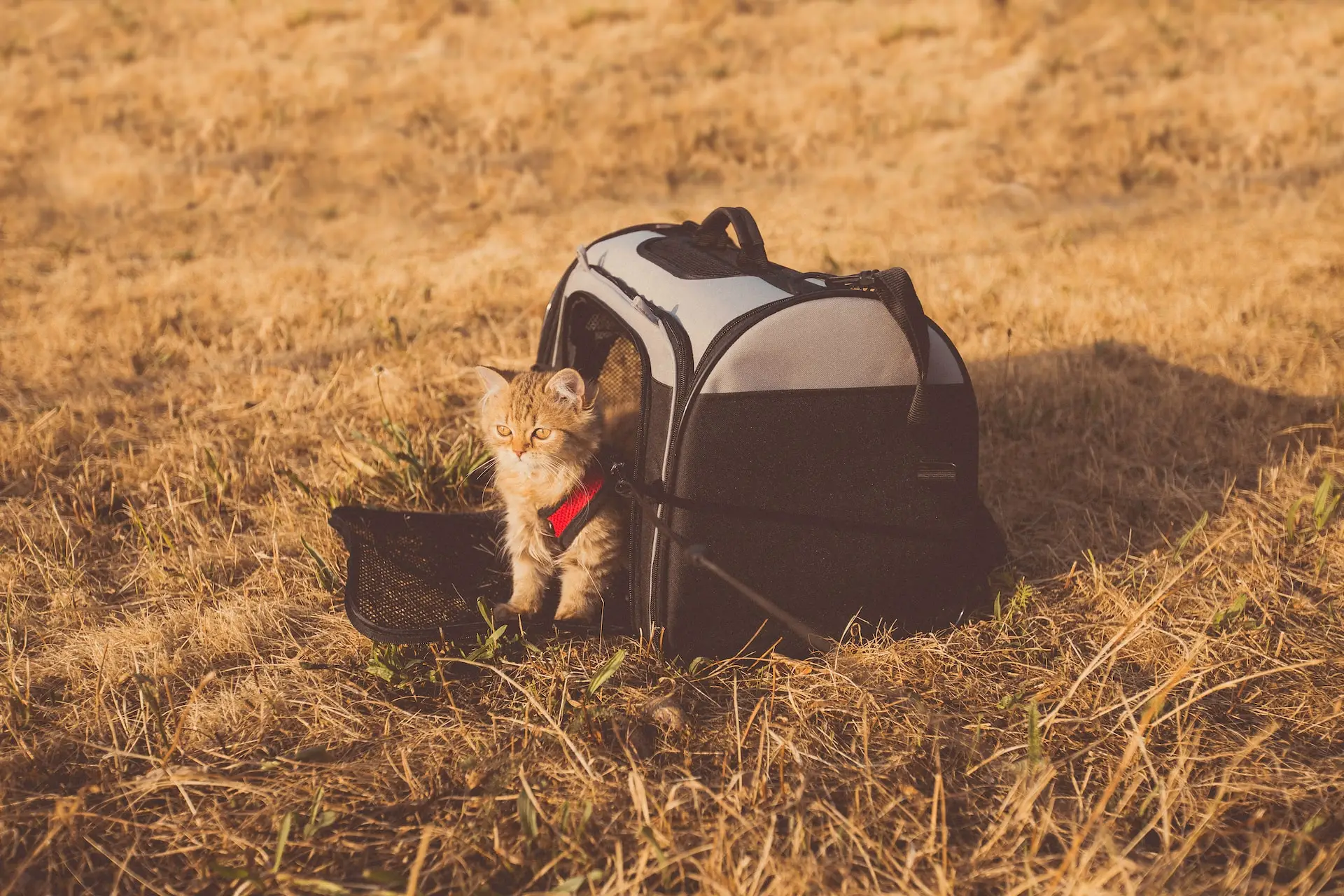If you’ve ever dreamed of having a pocket-sized companion with big, curious eyes and a personality to match those eyes, sugar gliders might be the perfect exotic addition to your household. These adorable creatures, native to Australia, Indonesia, and New Guinea, have been gaining popularity as pets in recent years. However, before you rush to bring home these tiny acrobats, it’s crucial to understand their unique needs and whether they would make suitable pets for your lifestyle.
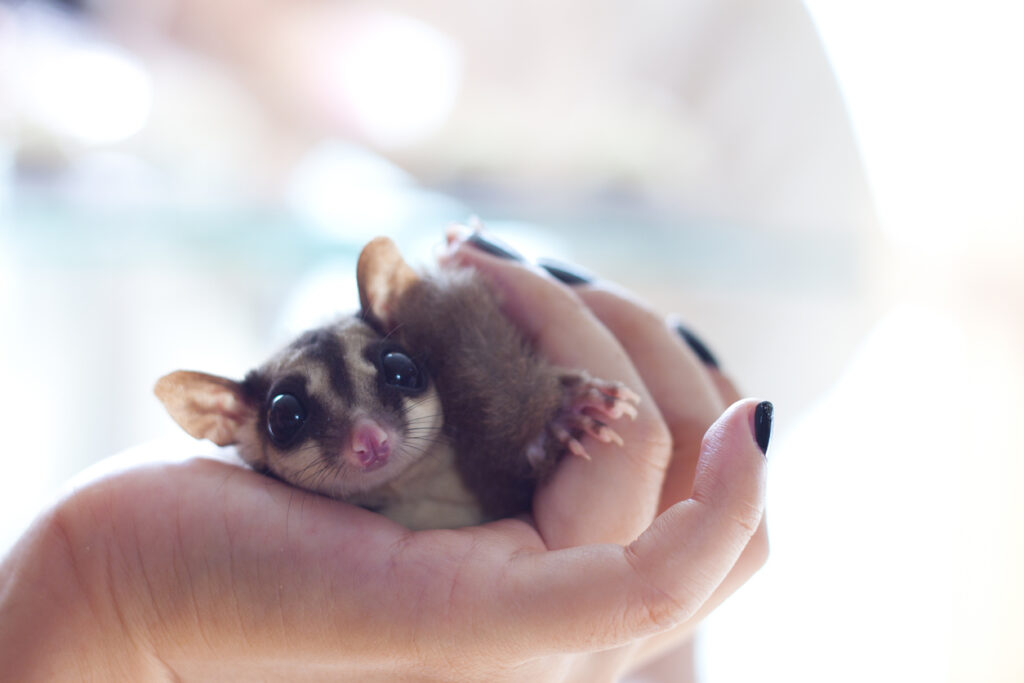
What are Sugar Gliders?
Sugar gliders (Petaurus breviceps) are small, nocturnal marsupials known for their gliding abilities. Their name originates from their love for sweet nectar and their unique gliding membrane that extends from their wrists to their ankles, allowing them to glide from tree to tree in search of food.
In the wild, sugar gliders are social animals that live in colonies, forming tight-knit bonds with their fellow gliders.
Here are some more detailed characteristics:
- Size: Sugar gliders are small, measuring about 5 to 6 inches long (excluding their tail) and weighing between 3 and 5 ounces.
- Fur: They have soft, thick fur ranging from gray to brown, with a black stripe on their back and large eyes.
- Gliding Ability: Sugar gliders have a patagium, a membrane of skin stretching from their wrists to their ankles, which allows them to glide from tree to tree. Gliding is their primary means of transportation.
- Behavior: These creatures are nocturnal, meaning they are most active at night. Overall, they are social animals and often live in groups called colonies. Keeping them in pairs or small groups in captivity is recommended to prevent loneliness.
- Diet: Sugar gliders have an omnivorous diet consisting of nectar, fruits, insects, and tree sap. In captivity, they are commonly fed a diet that includes a mix of fruits, vegetables, proteins, and a specially formulated sugar glider pellet food.
- Life Span: They typically live around 5 to 7 years in the wild. They can live longer in captivity with proper care, sometimes up to 12-15 years.
- Reproduction: Female sugar gliders, called joeys, have a well-developed pouch where they carry and nurse their young. After a relatively short gestation period, the tiny, undeveloped joeys are born and continue to develop in the mother’s pouch.
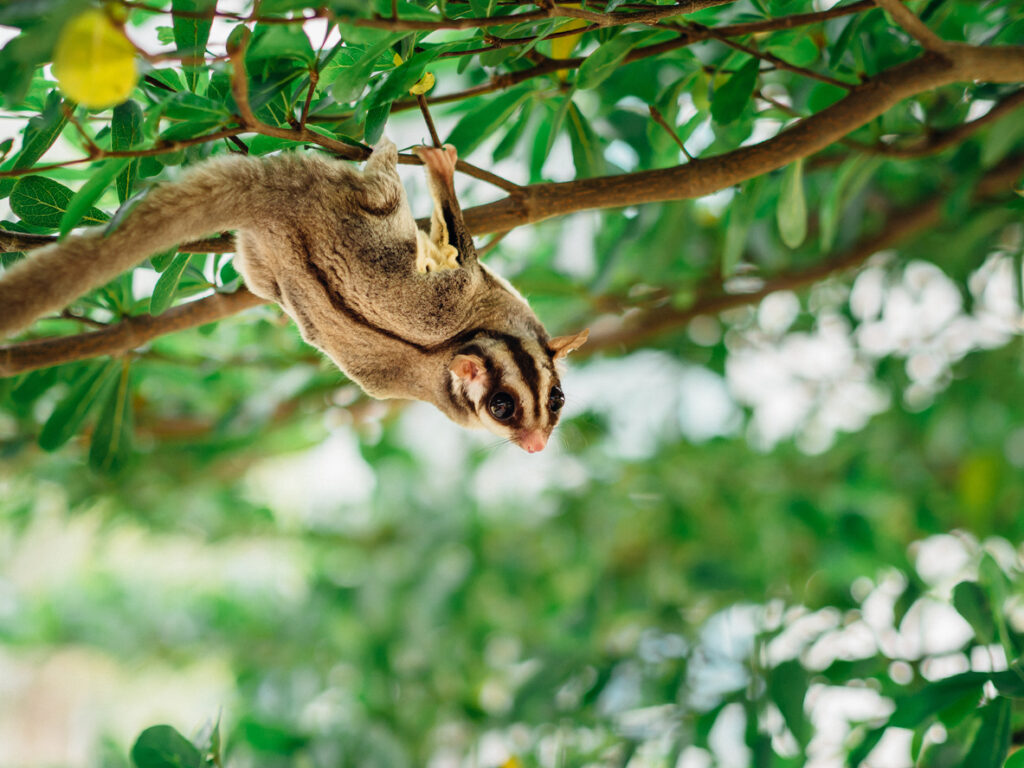
What Environment do They Normally Live in?
Knowing their natural habitat is essential in understanding whether sugar gliders are good pets.
In the wild, they inhabit the treetops of rainforests, where they can glide effortlessly between branches. They thrive in warm climates, relying on their gliding skills to navigate dense canopies in search of sap, nectar, insects, and fruits.
Replicating their natural environment is crucial for those considering sugar gliders as pets. A spacious cage with vertical space for climbing and gliding is a must. Additionally, sugar gliders are sensitive to temperature fluctuations, so maintaining a consistently warm environment is essential for their well-being.
What is Their Behavior and Temperament?
Sugar glider behavior is known to be playful and affectionate, making them endearing pets for those ready to invest time in bonding with them. But please note that they are nocturnal, meaning they are most active at night. This behavior might be an adjustment for those expecting a diurnal pet.
Not only are they nocturnal, but they are also very social, thriving on companionship. Keeping at least two sugar gliders together is advisable to prevent loneliness and ensure they lead fulfilling lives. Their social nature extends to their interaction with humans, and with proper bonding, they can become affectionate and enjoy cuddling with their owners.
They also have unique communication methods, such as vocalizations and scent marking, which might take some getting used to for new owners. Understanding their behaviors and vocal cues is critical to creating a harmonious relationship with these charming creatures.
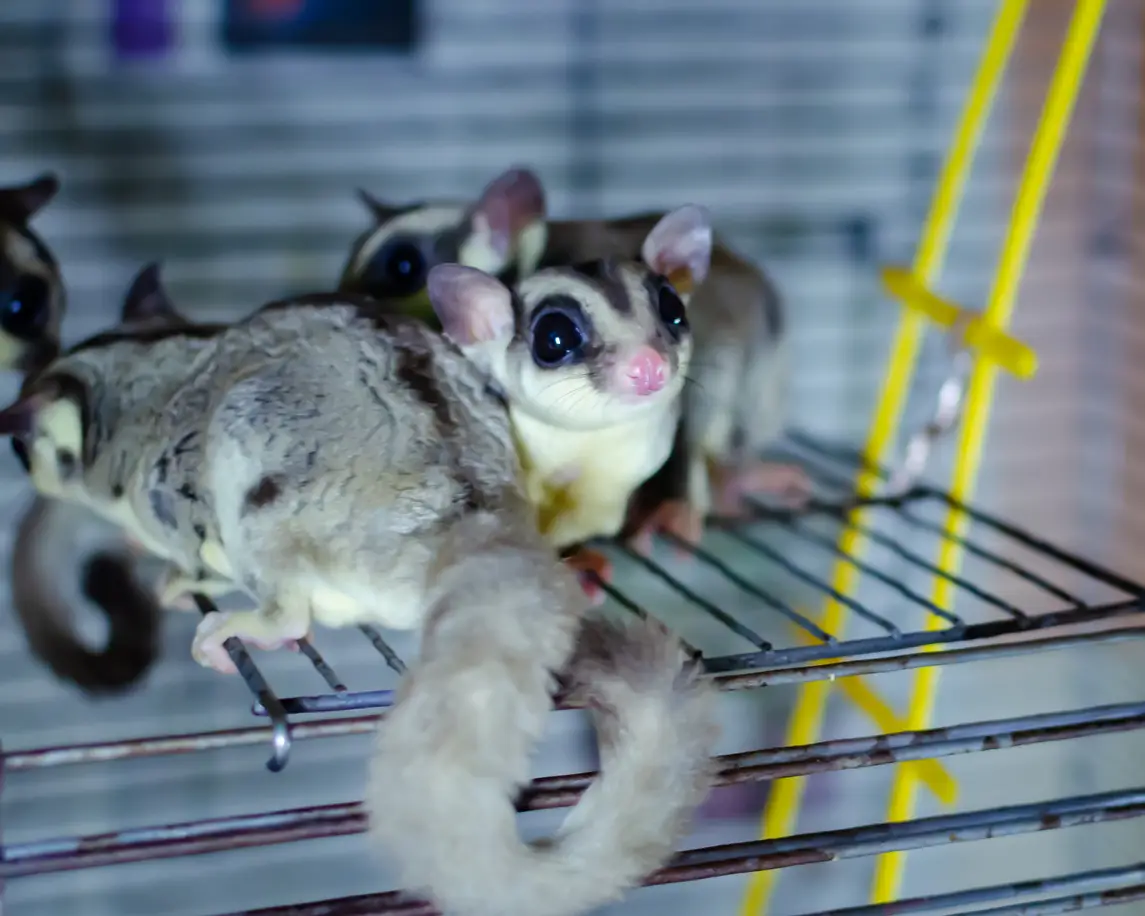
What is Needed for Proper Sugar Glider Care?
Caring for sugar gliders requires commitment and understanding of their specific needs. Here are some essential aspects to consider:
- Diet: Sugar gliders have a specialized diet that includes a mix of fresh fruits, vegetables, and a high-quality commercial diet formulated for their nutritional needs. Additionally, they may require supplements like calcium and vitamin D.
- Enclosure: A spacious and well-ventilated cage with horizontal bars for climbing and branches for perching is essential. It should also have a secure lock, as sugar gliders are clever escape artists.
- Socialization: Sugar gliders need daily interaction and playtime with their owners as highly social animals. This helps strengthen the bond and keeps them mentally stimulated.
- Grooming: Sugar gliders are meticulous groomers, but regular checks for cleanliness and health are necessary. They may also benefit from a shallow dish of water for bathing.
- Veterinary Care: Finding a veterinarian experienced in exotic pet care is crucial. Regular check-ups are essential to monitor their health, and prompt veterinary attention is needed for any signs of illness.
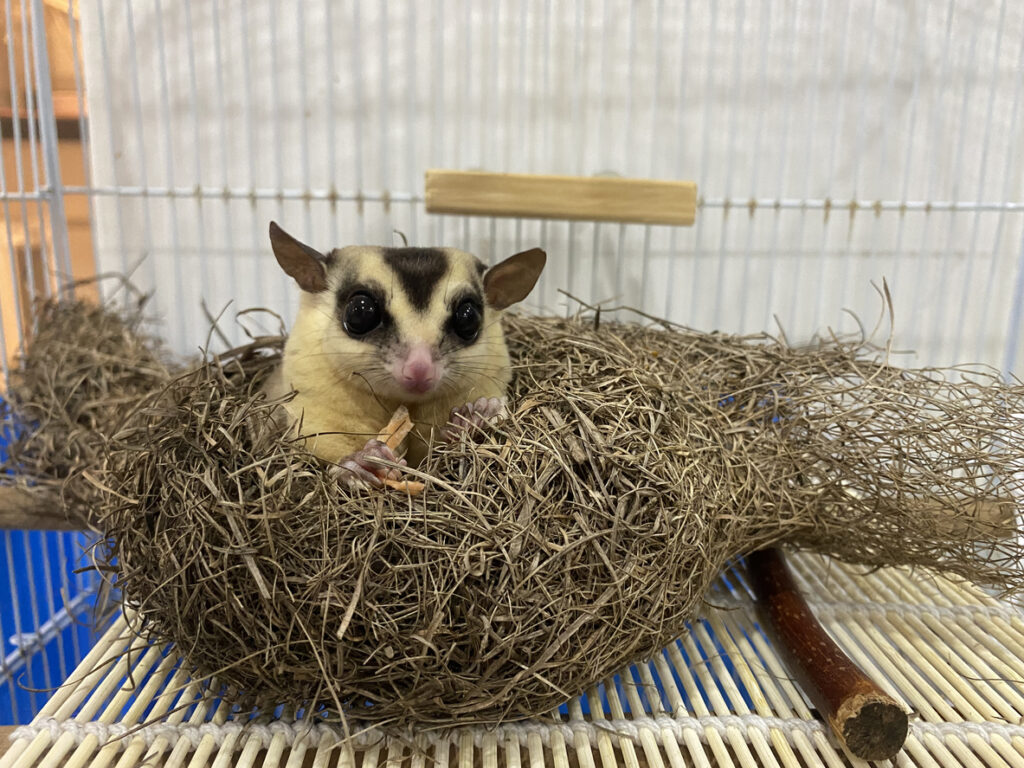
Is it Healthy and Legal to Keep Sugar Gliders as Pets?
The ethical considerations of keeping sugar gliders as pets are constantly debated. Some argue that responsible ownership and proper care can provide a fulfilling life for these marsupials. Others emphasize the challenges of meeting their complex needs in a domestic setting.
Legally, the ownership of sugar gliders varies by location. It’s crucial to research local regulations and ensure that keeping them as pets is permitted in your area. Some regions may require permits or restrict ownership due to concerns about their well-being and potential impacts on local ecosystems if released.
Conclusion
So, as you can see, owning sugar gliders is no easy task and requires high responsibility. Before bringing sugar gliders into your home, do thorough research, consult with experienced exotic pet owners, and adhere to local regulations. With exemplary commitment and care, you could find yourself with charming companions who bring a touch of the wild into your domestic life. So, can you keep sugar gliders as pets? The answer lies in your dedication to providing a loving and enriching environment for these tiny, gliding wonders.
